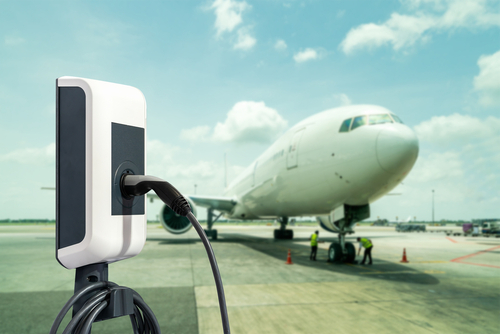FAA-NREL Report: Electric charging infrastructure will improve airports’ resilience, preparedness for sustainable aircraft

After partnering for analysis, the Federal Aviation Administration (FAA) and the National Renewable Energy Laboratory (NREL) last week released the results of a new technical report detailing the needs of electrical aircraft and what they will bring to airports.
In the “Electrification of Aircraft: Challenges, Barriers and Potential Impacts” report, the organizational pair determined that the FAA could create safety standards and recommend efficient, resilient airport infrastructure capable of supporting advanced new aircraft designs. Already, multiple electric aircraft are certified to help cargo, passenger, and short-distance, special purpose needs in specific markets.
However, old airport designs were not meant for the demands of new aircraft. The federal regulator will offer guidance for the planning and design of landing areas and on-the-ground infrastructure to support these aircraft at public facilities in ways that would allow them to address megawatt-level charging.
“We asked, who is evaluating the infrastructure for electrified flight?” Scott Cary, NREL’s lead for various sustainable aviation initiatives, said. “We are now digging into that component so the FAA can provide the guidance airports need if they choose to be an early adopter.”
In an ongoing capacity, NREL is assessing various U.S. airports to ascertain how best to implement electrical infrastructure at scale. It will also determine associated factors like job growth potential and the reduction of greenhouse gas emissions. Utilizing data from airports and generic specifications of certified aircraft, researchers will further determine recommended locations for charging and scenarios for providing energy, as airports tend to be determined by an area’s transportation needs, not its energy supply.
“The question is if you bring a new energy load into a community, can you bring in a source of generation with it?” Cary said. “Smaller airports may receive two scheduled flights per day. That aircraft could recharge using on-site generation or generation on adjacent land leased to an energy provider, and for the remainder of the day, those resources are making the local grid more stable. It establishes energy closer to where people are using it and connects communities.”
Accompanying all this will be a hazard analysis to help develop FAA standards for energy security and resilience in anticipation of disruptions from lightning, infrastructure damage, and other risks.
“Leveraging the U.S. Department of Energy’s laboratory system supplements the FAA’s programs and capabilities,” Wesley Major, FAA airport research specialist, said. “Working with NREL allows the FAA to leverage existing transportation research to aerospace needs.”
